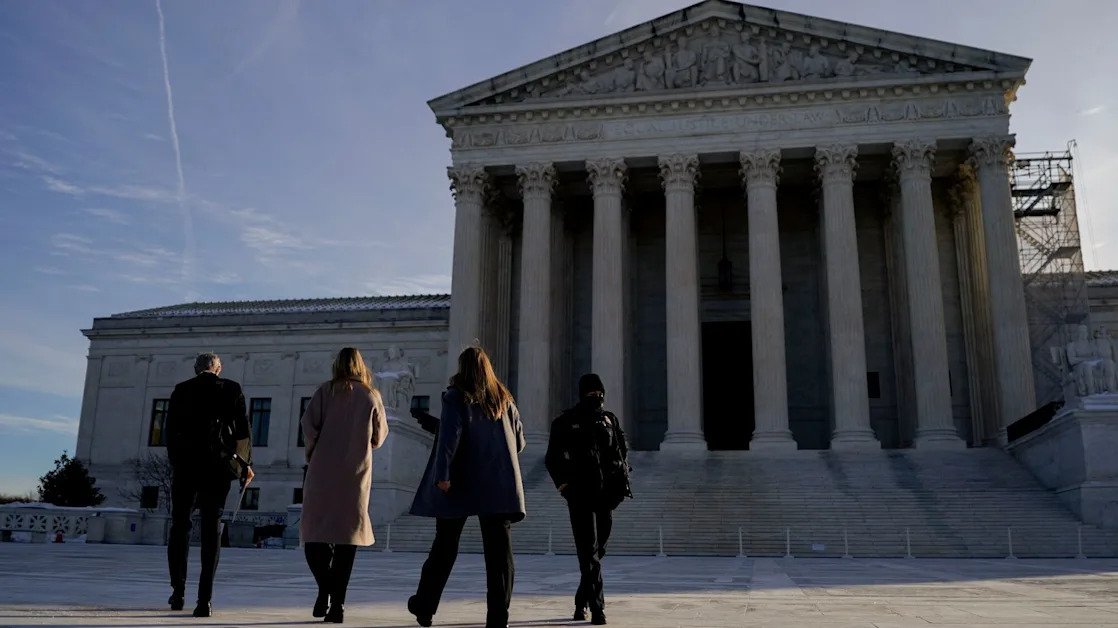(Bloomberg) -- The US Supreme Court bolstered President Donald Trump’s campaign to fire tens of thousands of federal workers, blocking a judge’s order that required the administration to reinstate employees in six government departments.
Granting a Trump request over two dissents, the high court on Tuesday gave the president at least a temporary win on what has become one of his signature initiatives, a step he says is warranted to cut costs and realign agency priorities.
The decision marks the third time in less than a week that the Supreme Court has backed Trump’s actions to transform the federal government and other American institutions. It’s the first mass-firing case to reach the high court.
The case involves 16,000 fired workers who had probationary status, meaning they were recently hired or promoted to new roles, at the departments of Agriculture, Defense, Energy, Interior, Treasury and Veterans Affairs. US District Judge William Alsup in San Francisco had ordered those workers reinstated while a lawsuit by unions and nonprofit organizations went forward.
In two-paragraph decision, the high court said the nine groups that secured Alsup’s order lacked the legal right to press the case. “Under established law, those allegations are presently insufficient to support the organizations’ standing,” the court said.
Workers in 19 states and the District of Columbia still must be kept on paid administrative leave at a larger set of agencies under a judge’s order in a similar case in Maryland. But the Supreme Court decision means the administration won’t have to continue fully restoring workers to their jobs at the six departments in the 20 jurisdictions — and can fire employees who aren’t covered by the Maryland order.
Justices Sonia Sotomayor and Ketanji Brown Jackson said they would have denied the Trump request. Sotomayor gave no explanation, while Jackson said she wouldn’t have considered the issue of standing in the context of an emergency application.
The groups challenging the firings, led by the American Federation of Government Employees, vowed to keep fighting.
“There is no doubt that thousands of public service employees were unlawfully fired in an effort to cripple federal agencies and their crucial programs that serve millions of Americans every day,” the groups said. “Today’s order by the US Supreme Court is deeply disappointing but is only a momentary pause in our efforts to enforce the trial court’s orders and hold the federal government accountable.”
‘Sham’ Explanation
Alsup found that the Office of Personnel Management, which serves as the human resources arm of the federal government, had likely violated US law when it directed the agencies to remove employees. During a hearing, he blasted a model termination letter OPM provided — with language indicating employees were being fired for performance reasons — as a “sham.”
The personnel office “has no authority to direct other federal agencies to fire employees,” the suing groups argued. “Yet the unrebutted factual record conclusively demonstrates, and the district court correctly found, that OPM directed the firing of tens of thousands of federal employees beginning in early February, on the false pretense that the employees’ performance was deficient.”
Deputy Solicitor General Sarah Harris told the Supreme Court that Alsup had let the suing groups “hijack” the relationship between the government and its employees. Harris also broadly criticized the “interbranch power grab” by district court judges who have entered a slew of orders blocking Trump’s executive actions in the administration’s first two months.
“The lower courts should not be allowed to transform themselves into all-purpose overseers of executive branch hiring, firing, contracting, and policy making,” wrote Harris, who served as the administration’s top Supreme Court lawyer until the Senate confirmed D. John Sauer as US solicitor general on April 3.
Harris argued that reinstating all the workers would impose “immense” financial costs and logistical burdens on the government. “Every day that the government remains subject to the injunction inflicts intolerable harm on the functioning of the executive branch,” she argued.
The challengers said the administration was vastly overstating the burdens given that many fired workers have already been rehired and are simply reassuming their old responsibilities.
“It beggars belief that returning employees to work would cause irreparable harm to the government when these employees had the same workspace, credentials, benefits, and training days or weeks ago,” the unions and nonprofits argued.
The case is Office of Personnel Management v. American Federation of Government Employees, AFL-CIO, 24A904.
--With assistance from Zoe Tillman.
(Updates with reaction from groups in ninth paragraph.)


